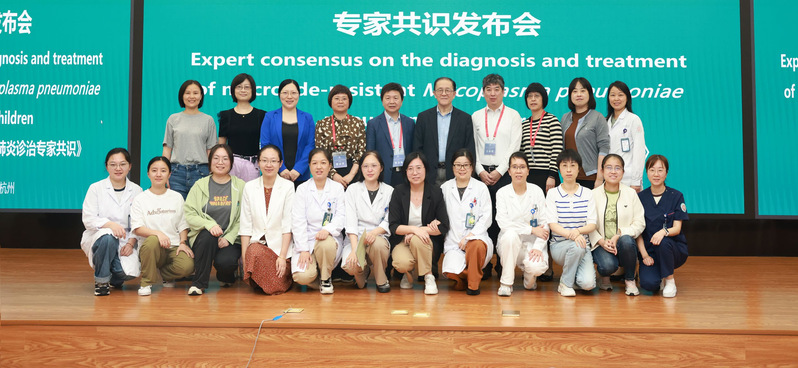On August 14, 2024, the Expert Consensus on the Diagnosis and Treatment of Macrolide-Resistant Mycoplasma Pneumoniae Pneumonia in Children was published online in the World Journal of Pediatrics. The consensus was led by Professor CHEN Zhiming from the National Clinical Research Center for Child Health (NCRCCH) at the Children’s Hospital, Zhejiang University School of Medicine. This is the world’s first consensus on the diagnosis and treatment of pediatric macrolide-resistant Mycoplasma pneumoniae (MRMP) pneumonia.
Since the first report on MRMP in children was published by Japanese scholars in 2001, MRMP has become more prevalent worldwide, especially in East Asia, where the isolation rate of MRMP has reached as high as 70-90%. This poses a serious challenge to the treatment of Mycoplasma pneumoniae infections in children. In recent years, MRMP has become an epidemic on the Chinese mainland, with the isolation rate of MRMP in clinical strains exceeding 90% in most cases. This has resulted in major challenges for Chinese patients, society, and pediatricians. However, due to various factors, there has been a lack of global consensus on the diagnosis and treatment of MRMP in children, particularly regarding antimicrobial therapy for MRMP, which remains highly controversial.
Against this backdrop, the Children’s Hospital, Zhejiang University School of Medicine invited 29 Chinese experts majoring in pediatric pulmonology and epidemiology to conduct evidence collection using electronic databases, such as PubMed, Embase, Web of Science, CNKI, Medline, and the Cochrane Library. They summarized and studied MRMP data from various countries and regions, with a specific focus on the Chinese context. This culminated in the development of the Expert Consensus on the Diagnosis and Treatment of Macrolide-Resistant Mycoplasma Pneumoniae Pneumonia in Children. The release of this consensus aims to guide and standardize pediatricians’ approaches to the diagnosis and treatment of MRMP, reduce the irrational use of antimicrobial drugs, decrease the occurrence of sequelae, lower the mortality rates, and alleviate the medical burden.
For more information Contact us: chxczx@zju.edu.cn
